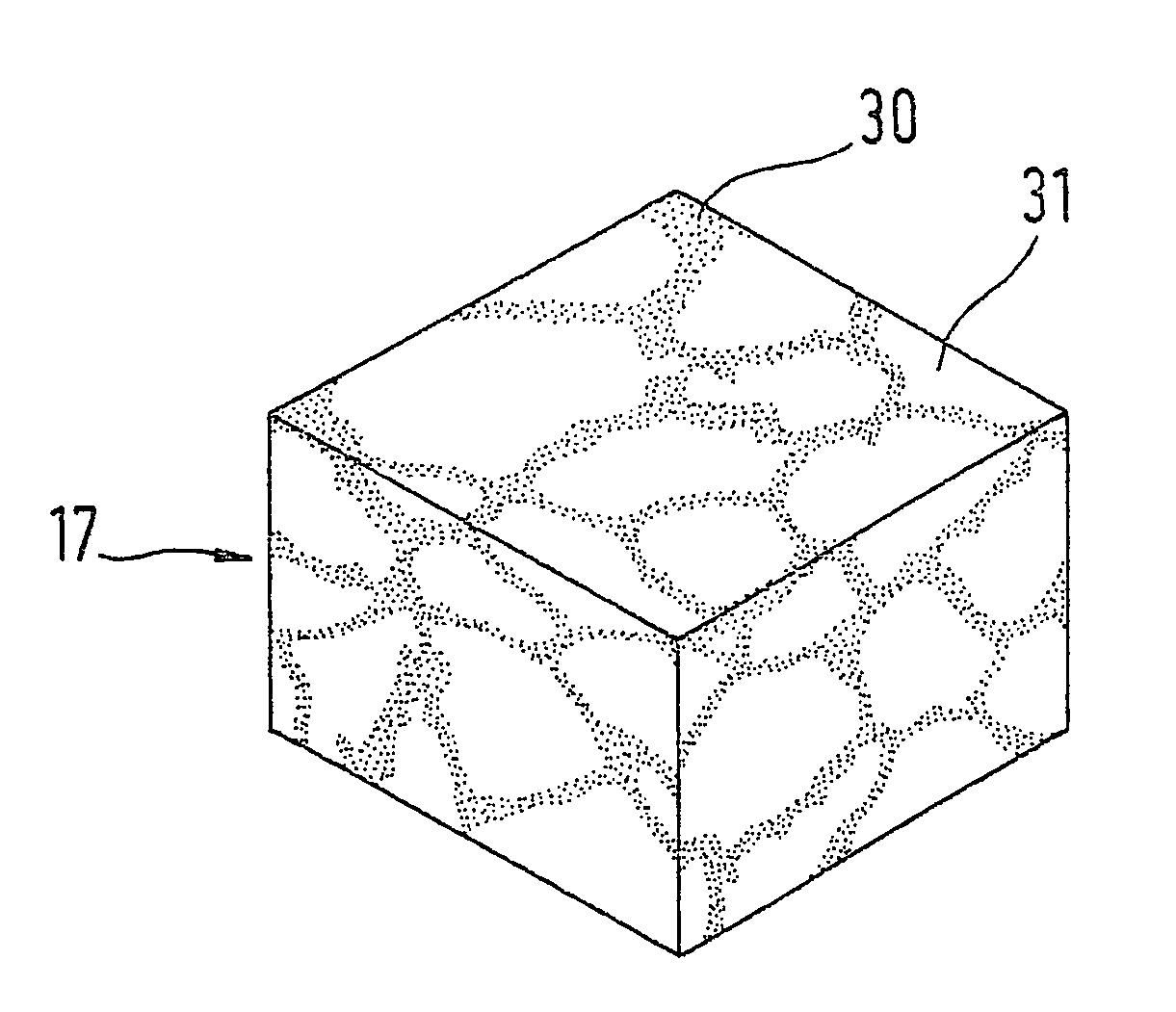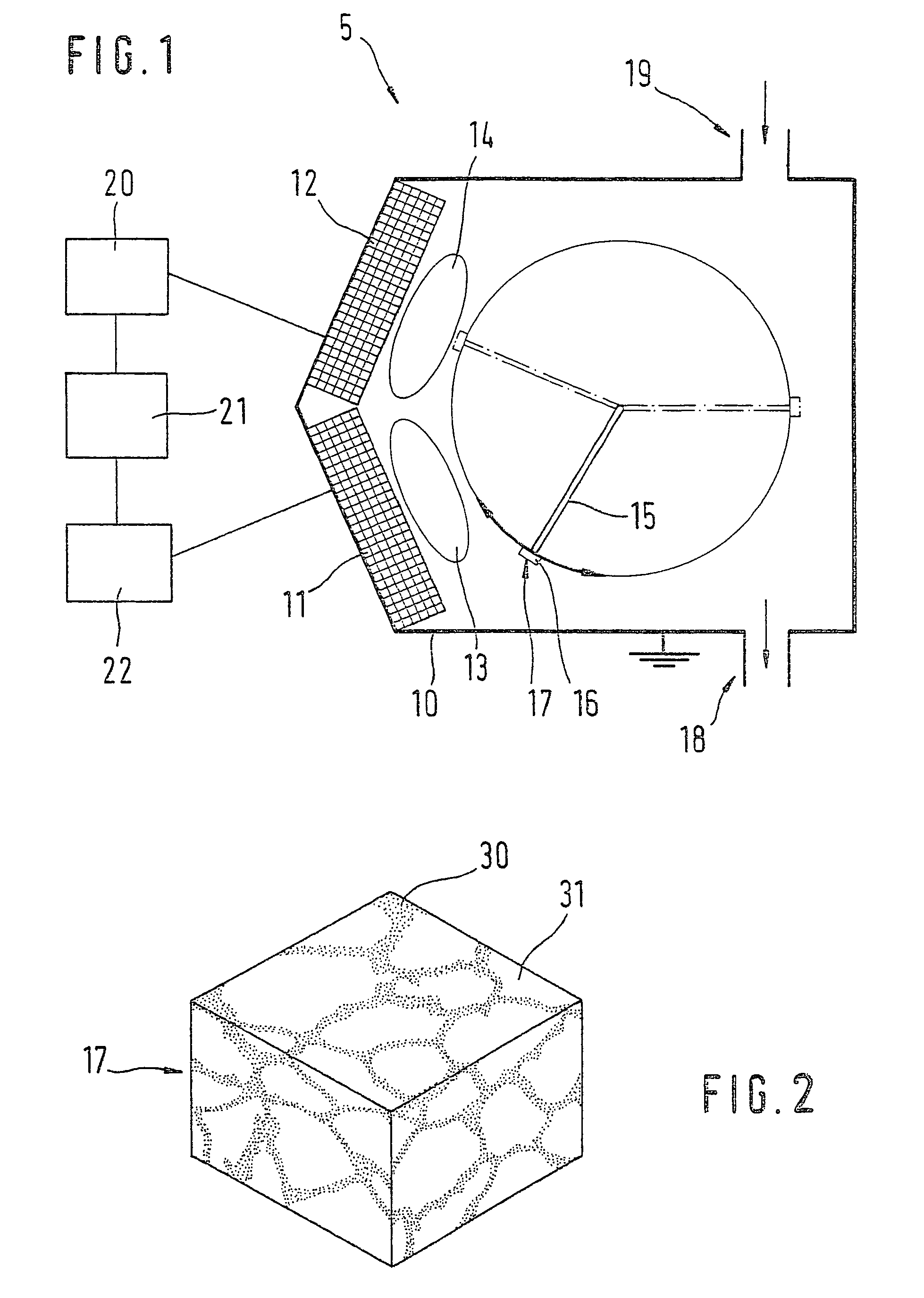Method for producing a nonostructured functional coating and a coating that can be produced according to said method
a non-structural, functional coating technology, applied in the direction of manufacturing tools, other chemical processes, natural mineral layered products, etc., can solve the problems of reducing the adhesive strength, and reducing the wear resistance of the coating by increasing the hardness,
- Summary
- Abstract
- Description
- Claims
- Application Information
AI Technical Summary
Benefits of technology
Problems solved by technology
Method used
Image
Examples
Embodiment Construction
[0023]The present invention is based on a coating system 5 represented in FIG. 1, as described in similar form in M. Diserens et al., Interface and Coatings Technology, 108 to 109 (1998), p. 242.
[0024]In detail, coating system 5 has a grounded vacuum chamber 10, a first plasma source 11, a second plasma source 12, a substrate support 15 with a substrate 16 on it, a gas outlet 18 and a gas inlet 19. The design also provides for first plasma source 11 to be used in producing a first plasma 13 that is associated with it, and for second plasma source 12 to be used in producing a second plasma 14 that is associated with it, from which plasmas a coating 17 is deposited on the surface of substrate 16 via a material-input.
[0025]FIG. 1 also shows that first plasma source 11 is connected to a first high voltage source 22 and second plasma source 12 to a second high voltage source 20, with whose aid plasma sources 11, 12 are each pulsable initially independently of each other. In addition, an ...
PUM
| Property | Measurement | Unit |
|---|---|---|
| mean grain size | aaaaa | aaaaa |
| frequency | aaaaa | aaaaa |
| frequency | aaaaa | aaaaa |
Abstract
Description
Claims
Application Information
 Login to View More
Login to View More - R&D
- Intellectual Property
- Life Sciences
- Materials
- Tech Scout
- Unparalleled Data Quality
- Higher Quality Content
- 60% Fewer Hallucinations
Browse by: Latest US Patents, China's latest patents, Technical Efficacy Thesaurus, Application Domain, Technology Topic, Popular Technical Reports.
© 2025 PatSnap. All rights reserved.Legal|Privacy policy|Modern Slavery Act Transparency Statement|Sitemap|About US| Contact US: help@patsnap.com


